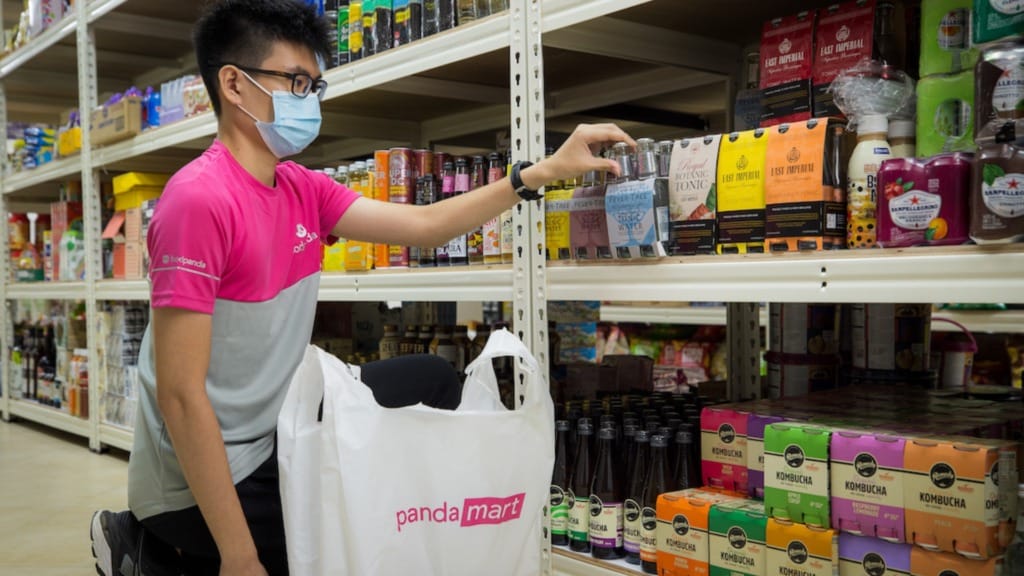The quick commerce sector in Southeast Asia experienced a meteoric rise during the COVID-19 pandemic, as consumers turned to online platforms to rapidly deliver essentials. Companies like GrabMart, Foodpanda Shops, and GoMart capitalised on this demand, offering swift delivery services catering to homebound customers’ needs. The convenience of receiving groceries and daily necessities within hours became an indispensable part of daily life for many.
However, as the pandemic’s grip loosened and societies began to reopen, the quick commerce industry faced unforeseen challenges. The initial surge in demand waned, and several key players struggled to maintain their foothold in the market.
Rise and fall of quick commerce
During the height of the pandemic, quick commerce platforms experienced unprecedented growth. Companies such as GrabMart, Foodpanda Shops, and GoMart saw a significant increase in user engagement, as lockdowns and social distancing measures limited traditional shopping avenues. The promise of rapid delivery times appealed to consumers seeking convenience and safety.
Several factors drove the success of these platforms. The necessity of minimising physical contact pushed consumers towards online shopping. Additionally, the expansion of digital payment systems facilitated seamless transactions, further enhancing the user experience. The integration of user-friendly interfaces and diverse product offerings also played a crucial role in attracting a broad customer base.

Despite the initial success, signs of decline emerged as early as mid-2022. Companies faced increasing operational costs and logistical challenges, leading to a reassessment of their business models. The rapid expansion during the pandemic masked underlying issues that became apparent in the post-pandemic landscape.
By late 2024, the quick commerce industry in Southeast Asia witnessed significant contractions. Several startups either ceased operations or pivoted to alternative business models. For instance, GoTo’s quick commerce service, Tokopedia Now, was discontinued after three years of operation, highlighting the difficulties in sustaining such services in the evolving market.
Challenges faced by quick commerce
One of the primary challenges confronting quick commerce platforms is the high operational cost associated with maintaining rapid delivery services. Expenses related to warehousing, inventory management, and last-mile delivery have proven substantial. The need for strategically located warehouses to ensure quick delivery increases the financial burden.
Moreover, the industry has grappled with limited customer loyalty. Consumers often prioritise convenience and price over brand allegiance, leading to a fickle customer base. This behaviour necessitates continuous investment in marketing and promotions to retain users, further straining financial resources.
The saturation of urban markets has intensified competition among quick commerce providers. Multiple players vying for the same customer segment have squeezed profit margins, leading to aggressive pricing strategies that are not sustainable in the long term.
Additionally, regulatory hurdles have posed significant obstacles. Governments in the region have implemented policies to oversee e-commerce operations, including registration requirements and compliance with local laws. For example, Vietnam mandated that online retailers like Temu register with the government or face suspension, reflecting the increasing regulatory scrutiny in the sector.
Shift in consumer behaviour
As pandemic restrictions eased, consumer behaviour markedly changed. Many individuals reverted to traditional in-store shopping, appreciating the tactile experience and immediate gratification it offers. This transition led to a decline in reliance on quick commerce services.

Concerns over delivery fees and sustainability have also influenced consumer choices. The environmental impact of rapid delivery services, including increased carbon emissions from transportation and packaging waste, has become a consideration for the environmentally conscious consumer. Additionally, the added cost of delivery fees has deterred price-sensitive customers from using quick commerce platforms regularly.
Furthermore, there has been a growing preference for traditional e-commerce platforms that offer a wider range of products, often at lower prices. While these platforms are not as fast in delivery, they provide value through variety and cost savings, appealing to a broader audience.
The economic impact of the pandemic has also led consumers to be more cautious with their spending. Discretionary spending has decreased, and consumers are more deliberate in purchasing decisions, affecting the frequency and volume of quick commerce transactions.
Future of quick commerce in Southeast Asia
Despite the challenges, there remains potential for quick commerce in niche markets or rural areas where traditional retail infrastructure is lacking. Tailoring services to meet the specific needs of these communities could open new avenues for growth.
Innovation will be key to revitalising the quick commerce sector. Implementing sustainable practices, such as eco-friendly packaging and optimised delivery routes, can address environmental concerns. Leveraging technology to improve operational efficiency and reduce costs will also be crucial.
Learning from other regions can provide valuable insights. For instance, India’s quick commerce market has seen significant growth, with companies adapting to local demands and focusing on unit economics to achieve profitability. Applying similar strategies could benefit Southeast Asian markets.
Collaboration with local businesses and communities can foster a more resilient ecosystem. By integrating local vendors and products, quick commerce platforms can offer unique value propositions, differentiating themselves from larger e-commerce players.
Future prospects for quick commerce in the region
The trajectory of quick commerce in Southeast Asia underscores the dynamic nature of the region’s e-commerce landscape. Initially propelled by pandemic-induced demand, the sector experienced rapid growth as consumers sought convenient and swift delivery options. However, as normalcy returned, sustaining this growth proved challenging.
Key obstacles such as high operational costs, limited customer loyalty, and intense urban competition have significantly impacted the viability of quick commerce models. Additionally, evolving consumer preferences, including a renewed interest in in-store shopping and heightened awareness of sustainability issues, have further influenced the sector’s decline.
Despite these challenges, opportunities remain for quick commerce to adapt and thrive. Focusing on niche markets and rural areas and integrating innovative, sustainable practices could pave the way for a resurgence. Learning from successful models in other regions, such as India’s diversified approach, may offer valuable insights into Southeast Asian markets.
The rise and fall of quick commerce in Southeast Asia offer critical lessons for the broader e-commerce and logistics sectors. Emphasising adaptability, operational efficiency, and alignment with consumer values will be essential for future endeavours in this dynamic market.





